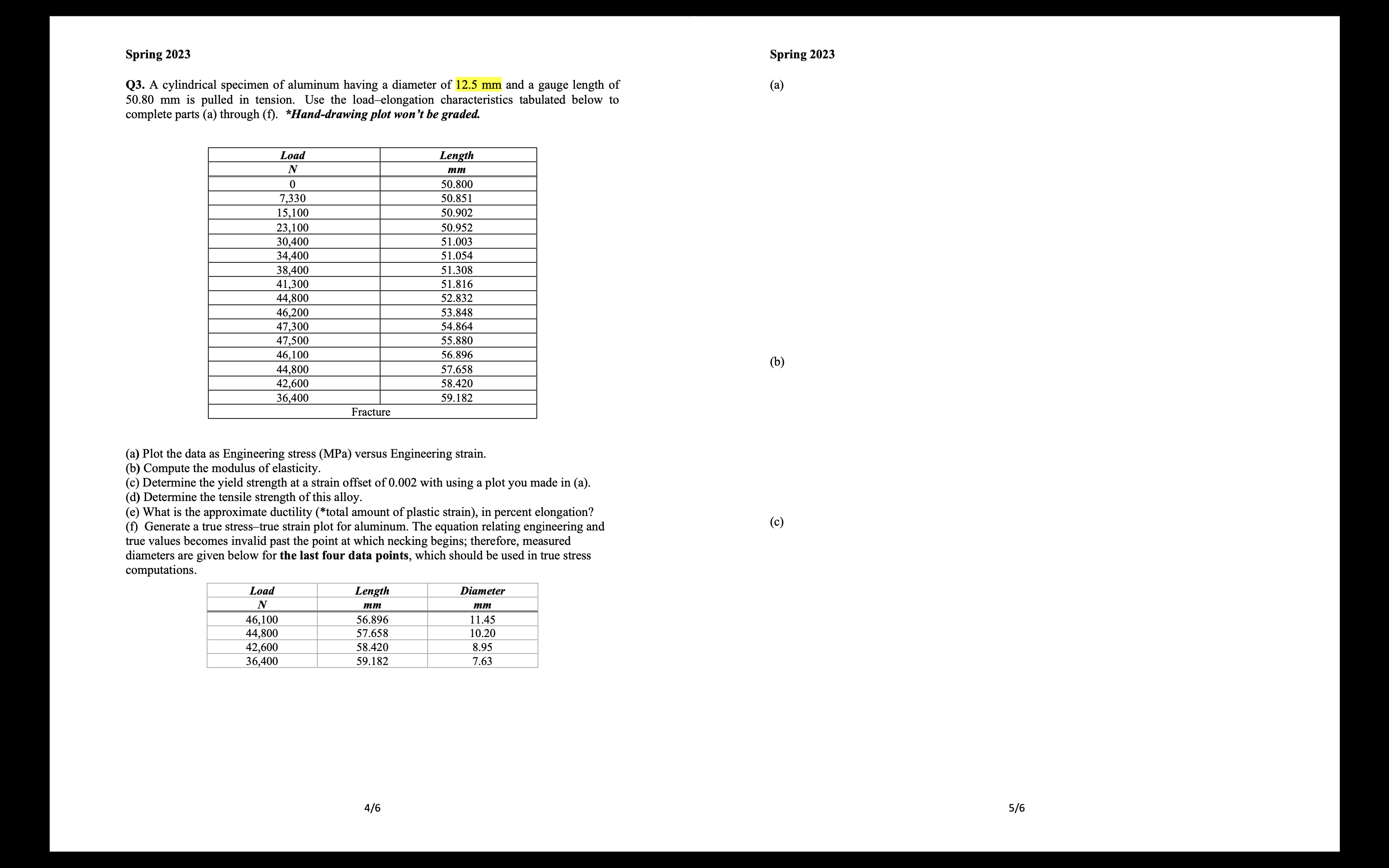Answered step by step
Verified Expert Solution
Question
1 Approved Answer
Spring 2023 Q3. A cylindrical specimen of aluminum having a diameter of 12.5 mm and a gauge length of 50.80 mm is pulled in

Spring 2023 Q3. A cylindrical specimen of aluminum having a diameter of 12.5 mm and a gauge length of 50.80 mm is pulled in tension. Use the load-elongation characteristics tabulated below to complete parts (a) through (f). *Hand-drawing plot won't be graded. Load N Length mm 0 50.800 7,330 50.851 15,100 50.902 23,100 50.952 30,400 51.003 34,400 51.054 38,400 51.308 41,300 51.816 44,800 52.832 46,200 53.848 47,300 54.864 47,500 55.880 46,100 56.896 44,800 57.658 42,600 58.420 36,400 59.182 Fracture (a) Plot the data as Engineering stress (MPa) versus Engineering strain. (b) Compute the modulus of elasticity. (c) Determine the yield strength at a strain offset of 0.002 with using a plot you made in (a). (d) Determine the tensile strength of this alloy. (e) What is the approximate ductility (*total amount of plastic strain), in percent elongation? (f) Generate a true stress-true strain plot for aluminum. The equation relating engineering and true values becomes invalid past the point at which necking begins; therefore, measured diameters are given below for the last four data points, which should be used in true stress computations. Load Length Diameter N mm mm 46,100 56.896 11.45 44,800 57.658 10.20 42,600 58.420 8.95 36,400 59.182 7.63 4/6 Spring 2023 (a) (b) 5/6
Step by Step Solution
There are 3 Steps involved in it
Step: 1
Solutions Step 1 This problem calls for us to make a stressstrain plot for aluminum given its tensil...
Get Instant Access to Expert-Tailored Solutions
See step-by-step solutions with expert insights and AI powered tools for academic success
Step: 2

Step: 3

Ace Your Homework with AI
Get the answers you need in no time with our AI-driven, step-by-step assistance
Get Started


